Bamboo by continent and country
As one of the most versatile and sustainable natural resources available worldwide, bamboo is growing across all seven continents; each region has its own unique species adapted to its respective climate, from the giant timber bamboos in Central and South America to the slender hedge species of Southeast Asia. In terms of country-level distinction, China alone is home to over 400 bamboo species spread across almost every province and every type of environment imaginable. By contrast, India boasts some 130 diverse species concentrated mainly along coastal regions, although it's believed that some varieties have been found even as far north as Nepal.
With its fast growth rate and strong construction qualities, bamboo can provide a range of benefits for local communities and has the potential to be a boon to countries throughout the world – from aiding reforestation efforts in North America to driving economic development in Africa, the different ways bamboo can help are incredible!
Choosing the Right Bamboo for Your Region
If you’re intrigued by bamboo and considering growing it, selecting the right species for your region is crucial. With so many types of bamboo out there, you’ll want one that suits your local climate and intended use. Here are a few pointers:
- Know your climate zone: Some bamboos thrive in tropical heat, while others are adapted to temperate or even cold regions. If you live in a cooler temperate climate (say, northern Europe or the northern U.S.), look for cold-hardy bamboos. Certain mountain clumping bamboos (Fargesia species, for example) can survive well below freezing and make nice ornamentals for temperate gardens. They generally form tidy clumps and won’t invade your yard.
- Clumping vs. Running: This is perhaps the most important distinction for gardeners. Clumping bamboos (mostly tropical/subtropical species) spread slowly outward from the plant, whereas running bamboos (mostly temperate species) spread aggressively via long underground rhizomes. If you’re in an area where running bamboos can grow, they will run if not contained, which can be either wonderful (for quickly creating a grove or privacy screen) or troublesome (if they invade neighbours’ yards or natural areas). If you prefer low maintenance, opt for clumpers or use root barriers to contain runners.
- Sun, water, and soil: Different bamboo species have different needs. Most bamboos like full sun or partial shade and appreciate regular moisture (they’re grasses, after all), but there are exceptions. For instance, some mountain bamboos prefer a bit of shade and cooler soil, whereas many tropical bamboos love sun and can handle periods of drought once established. Generally, the more water and warmth you give, the faster bamboo grows.
- Purpose and size: Think about why you want to grow bamboo. Is it for a privacy screen, an ornamental focal point, erosion control, or perhaps harvesting shoots or canes? There are compact bamboo varieties that only get 1–2 meters tall, ideal for low hedges or pots (Pleioblastus genus has some dwarf types). And there are giant varieties that reach 20+ meters, great for creating a lush forest feel or a windbreak (if you have a large property). Some bamboos have unique appearances – e.g., Phyllostachys nigra has striking black-colored canes, and Bambusa textilis has elegant weeping culms. Choosing a species that fits your aesthetic preference and space limitations will lead to a more satisfying outcome.
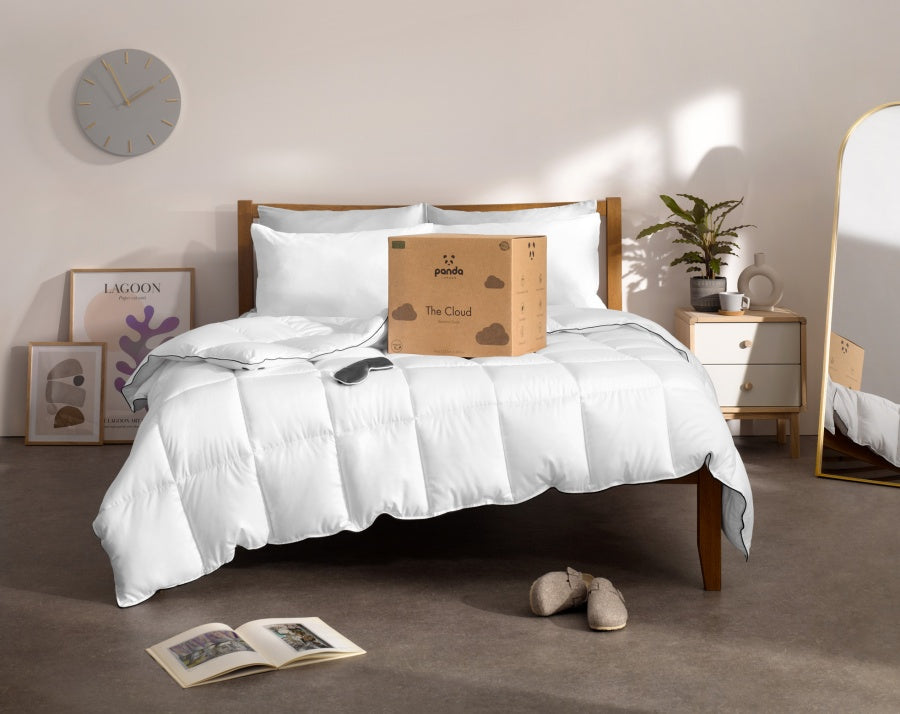

![[MattressTopper] Panda London Memory Foam Bamboo Mattress Topper package box](http://pandalondon.com/cdn/shop/files/Bamboo_Mattress_Topper_Package_Box.webp?v=1742301823&width=1500)
![[MattressTopper] Panda London Memory Foam Bamboo Mattress Topper on the floor](http://pandalondon.com/cdn/shop/products/Panda-Memory-Foam-Bamboo-Mattress-Topper-Yoga-e1624045454555.jpg?v=1742301823&width=1000)
![[MattressTopper] Bamboo Mattress Topper Lifestyle Image with Memory Foam Pillows Product Page](http://pandalondon.com/cdn/shop/files/Bamboo_Mattress_Topper_Lifestyle_Image_with_Memory_Foam_Pillows_Product_Page.webp?v=1742301823&width=800)
![[MattressTopper] Bamboo Mattress Topper Lifestyle Image with Bamboo Pillows In the Garden room Product Page](http://pandalondon.com/cdn/shop/files/Bamboo_Mattress_Topper_Lifestyle_Image_with_Bamboo_Pillows_In_the_Garden_room_Product_Page.webp?v=1752572859&width=800)
![[MattressTopper] Panda London Memory Foam Bamboo Mattress Topper side](http://pandalondon.com/cdn/shop/files/Mattress_Topper_Isolated_-_resized.jpg?v=1752572859&width=800)
![[HybridMattressPro] Main Image for Hybrid Bamboo Mattress Pro with all awards](http://pandalondon.com/cdn/shop/files/Hybrid_Bamboo_Mattress_Pro_Main_product_Image_with_awards.webp?v=1753971649&width=1000)
![[HybridMattressPro] Breathable Hybrid Bamboo Mattress](http://pandalondon.com/cdn/shop/products/Breathable-Hybrid-Bamboo-Mattress.jpg?v=1753971649&width=1920)
![[HybridMattressPro] Hybrid Bamboo Mattress Pro Cover Zip](http://pandalondon.com/cdn/shop/files/Hybrid_Bamboo_Mattress_Cover.jpg?v=1753971649&width=800)
![[HybridMattressPro] Panda Hybrid Bamboo Mattress Pro](http://pandalondon.com/cdn/shop/files/Hybrid_Bambo_Memory_Foam_Mattress_-_BioCell_Foam_x.jpg?v=1755095108&width=800)
![[HybridMattressPro] Couple on a Hybrid Bamboo Mattress Pro](http://pandalondon.com/cdn/shop/files/Hybrid_Bamboo_Mattress_Couple.jpg?v=1753971649&width=800)
![[CloudDuvet] Panda London The Cloud Bamboo Duvet Packaging](http://pandalondon.com/cdn/shop/products/Panda-London-The-Cloud-Bamboo-Duvet-Panda-Life-scaled_00a651ad-4ca3-4105-b520-12a94c1a4f71.jpg?v=1713363286&width=1920)
![[CloudDuvet] Panda London The Cloud Bamboo Duvet Rolled](http://pandalondon.com/cdn/shop/products/Duvet-Listing-Images03.jpg?v=1713361452&width=1000)
![[CloudDuvet] Panda London The Cloud Bamboo Duvet Girl Huggin a Duvet on the Bed](http://pandalondon.com/cdn/shop/files/Cloud_Bamboo_Duvet_-_Lady_Hugging_it_on_Bed_LifestyleImage.jpg?v=1719327585&width=1000)
![[CloudDuvet] Panda London The Cloud Bamboo Duvet Guy In the Air with Cloud Bamboo Duvet](http://pandalondon.com/cdn/shop/files/GuyonaHybridBambooMattresswithCloudDuvet.jpg?v=1743097928&width=2000)
![[CloudDuvet] Panda Cloud Duvet Winter on the bed lifestyle image](http://pandalondon.com/cdn/shop/files/Panda_Cloud_Duvet_Winter_on_the_Bed_Lifestyle-1_image.jpg?v=1747994959&width=1000)
![[BBWhite] White 100% Bamboo Bedding](http://pandalondon.com/cdn/shop/files/Pure_White_Full_Bed.webp?v=1719581797&width=1000)
![[BBWhite] White 100% Bamboo Bedding Texture](http://pandalondon.com/cdn/shop/files/100_Bamboo_Bedding_-_Pure_White_-_Close_Up_02.webp?v=1719581781&width=1000)
![[BBWhite] White 100% Bamboo Bedding Woman in bed sleeping](http://pandalondon.com/cdn/shop/files/100-Bamboo-Bedding-Set-Pure-White-BB.webp?v=1719581846&width=768)
![[BBWhite] White 100% Bamboo Bedding Woman Duvet cover buttons](http://pandalondon.com/cdn/shop/files/hand_and_buttons_1.webp?v=1719581781&width=1000)
![[BBWhite] White 100% Bamboo Bedding Woman in bed looking and smiling-](http://pandalondon.com/cdn/shop/files/SatonMadeBed-White100_BambooBedding-white_-_BB_SideShot1000x1000.webp?v=1719581864&width=980)
![[BBUrbanGrey] Urban Grey 100% Bamboo Bedding](http://pandalondon.com/cdn/shop/files/Made_Bed_-_Urban_Grey_-_Wide_Shot_2_1_1.webp?v=1754572609&width=1000)
![[BBUrbanGrey] Cloud Duvet Urban Grey 100% Bamboo Bedding Set](http://pandalondon.com/cdn/shop/files/Cloud_Duvet_-_Grey_-_Close_up_2.webp?v=1754572609&width=1000)
![[BBUrbanGrey] Urban Grey 100% Bamboo Bedding Set Woman sitting on the bed](http://pandalondon.com/cdn/shop/files/Sat_in_Bed_-_Grey_100__Bamboo_Bedding_-_Wide_Shot.webp?v=1754572609&width=1000)
![[BBUrbanGrey] Urban Grey 100% Bamboo Bedding Set Woman Duvet buttons Panda London](http://pandalondon.com/cdn/shop/files/hand_buttons_grey_bedding_1.webp?v=1754572609&width=1000)
![[BBUrbanGrey] Woman Sitting on the Bamboo Bedding with coffee](http://pandalondon.com/cdn/shop/files/SatonMadeBed-White100_BambooBedding-SideShot1000x1000.jpg?v=1754572609&width=1000)
![[BBNavyBlue] Deep Sea Navy Blue 100% Bamboo Bedding](http://pandalondon.com/cdn/shop/files/Made_Bed_-_Navy_-_Wide_Shot_3_copy.webp?v=1754576637&width=1000)
![[BBNavyBlue] Deep Sea Navy Blue 100% Bamboo Bedding Texture](http://pandalondon.com/cdn/shop/files/Cloud_Duvet_-_Navy_-_Close_up_2.webp?v=1754576637&width=1000)
![[BBNavyBlue] Deep Sea Navy Blue 100% Bamboo Bedding Woman Sitting on the bed](http://pandalondon.com/cdn/shop/files/Sat_Up_in_Bed_-_Navy_100__Bamboo_Bedding_-_Hands_on_Bed.webp?v=1754576637&width=1000)
![[BBNavyBlue] Deep Sea Navy Blue 100% Bamboo Bedding Duvet Cover Buttons](http://pandalondon.com/cdn/shop/files/Cloud_Duvet_Cover_Buttons_-_Deep_Sea_Navy.webp?v=1754576637&width=1000)
![[BBNavyBlue] Deep Sea Navy Blue 100% Bamboo Bedding Woman sitting on the bed looking away](http://pandalondon.com/cdn/shop/files/SatonMadeBed-White100_BambooBedding-SideShot1000x1000-001.webp?v=1754576652&width=980)
![[BBPink] Vintage Pink Blue 100% Bamboo Bedding](http://pandalondon.com/cdn/shop/files/Made_Bed_-_Pink_-_Wide_Shot_copy.webp?v=1754576652&width=1000)
![[BBPink] Vintage Pink Texture 100% Bamboo Bedding](http://pandalondon.com/cdn/shop/files/Cloud_Duvet_-_Pink_-_Close_up_2.webp?v=1754576652&width=1000)
![[BBPink] Vintage Pink Woman Sitting on the 100% Bamboo Bedding](http://pandalondon.com/cdn/shop/files/Sat_Up_in_Bed_-_Pink_-_Hands_on_Bed.webp?v=1754576652&width=1000)
![[BBPink] Vintage Pink Woman Sitting on the 100% Bamboo Bedding Duvet Cover](http://pandalondon.com/cdn/shop/files/Cloud_Duvet_Cover_Buttons_-_Vintage_Pink.webp?v=1754576652&width=1000)
![[BBPink] Vintage Pink Woman Sitting on the 100% Bamboo Bedding Woman looking far away](http://pandalondon.com/cdn/shop/files/SatonMadeBed-White100_BambooBedding-SideShot1000x1000-001_Vintage_Pink.webp?v=1754576652&width=980)
![[BBGrey] Light Grey 100% Bamboo Bedding](http://pandalondon.com/cdn/shop/files/Made_Bedding_in_Bedroom_-_Urban_Grey_-_Wide_Shot.webp?v=1754576637&width=1000)
![[BBGrey] Light Grey 100% Bamboo Bedding texture](http://pandalondon.com/cdn/shop/files/Texture17.webp?v=1754576637&width=1000)
![[BBGrey] Light Grey 100% Bamboo Bedding with Woman smiling](http://pandalondon.com/cdn/shop/files/Sat_Up_in_Bed_-_Grey_-_Hands_on_Bed.webp?v=1754576637&width=1000)
![[BBGrey] Light Grey 100% Bamboo Bedding with Duvet Cover buttons](http://pandalondon.com/cdn/shop/files/Cloud_Duvet_Cover_Buttons_-_Quiet_Grey.webp?v=1754576637&width=1000)
![[BBGrey] Light Grey 100% Bamboo Bedding with Woman smiling and sitting coffee](http://pandalondon.com/cdn/shop/files/SatonMadeBed-White100_BambooBedding-SideShot1000x1000-002-_Grey.webp?v=1754576637&width=980)
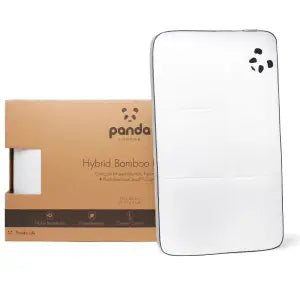 Hybrid Bambuskissen
Hybrid Bambuskissen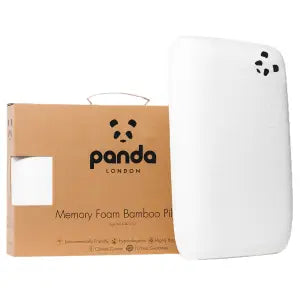 Memory Foam Bambuskissen
Memory Foam Bambuskissen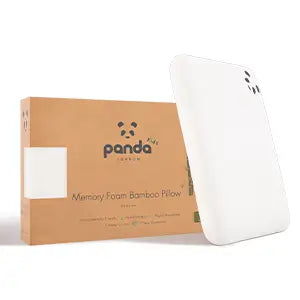 Memory Foam Bambuskissen für Kinder
Memory Foam Bambuskissen für Kinder Baby Memory Foam Bambuskissen
Baby Memory Foam Bambuskissen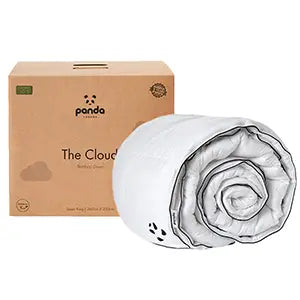 Panda Bettdecke Cloud
Panda Bettdecke Cloud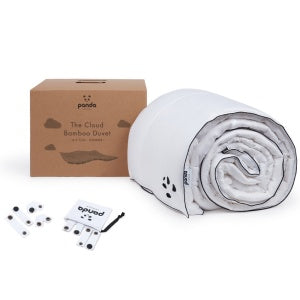 Bamboo Summer Duvet
Bamboo Summer Duvet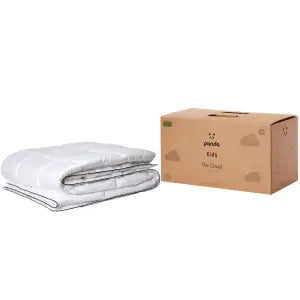 Kinder Cloud Bettdecke
Kinder Cloud Bettdecke

![[BBPureWhiteFlatSheet] Bamboo Bedding Panda London White Flat Sheet](http://pandalondon.com/cdn/shop/files/PureWhiteBambooBeddingFlatSheetSideView.webp?crop=region&crop_height=1406&crop_left=547&crop_top=0&crop_width=1406&v=1721310528&width=2500)
![[BBPureWhiteFlatSheet] Bamboo Bedding Panda London White Flat Sheet Package](http://pandalondon.com/cdn/shop/files/PureWhiteBambooBeddingFlatSheetPackage.webp?v=1721310528&width=1713)
![[BBPureWhiteFlatSheet] Bamboo Bedding Panda London White Flat Sheet Texture](http://pandalondon.com/cdn/shop/files/PureWhiteBambooBeddingFlatSheetTexture.webp?v=1721310527&width=980)
![[BBPureWhiteFlatSheet] Bamboo Bedding Panda London White Flat Sheet Lifestyle Image](http://pandalondon.com/cdn/shop/files/PureWhiteBambooBeddingFlatSheetFrontView.webp?crop=region&crop_height=1406&crop_left=547&crop_top=0&crop_width=1406&v=1721310528&width=2500)
![[BBQuietGreyFlatSheet] Bamboo Bedding Panda London QuietGrey Flat Sheet](http://pandalondon.com/cdn/shop/files/Quiet_Grey_Bamboo_Bedding_Flat_Sheet_Side_View.webp?crop=region&crop_height=1406&crop_left=547&crop_top=0&crop_width=1406&v=1721310625&width=2500)
![[BBQuietGreyFlatSheet] Bamboo Bedding Panda London QuietGrey Flat Sheet Package](http://pandalondon.com/cdn/shop/files/Quiet_Grey_Bamboo_Bedding_Flat_Sheet_Package.webp?v=1721310625&width=1713)
![[BBQuietGreyFlatSheet] Bamboo Bedding Panda London QuietGrey Flat Sheet Texture](http://pandalondon.com/cdn/shop/files/Quiet_Grey_Bamboo_Bedding_Flat_Sheet_Texture.jpg?v=1721310626&width=980)
![[BBQuietGreyFlatSheet] Bamboo Bedding Panda London QuietGrey Flat Sheet Front View](http://pandalondon.com/cdn/shop/files/Quiet_Grey_Bamboo_Bedding_Flat_Sheet_Front_View.webp?crop=region&crop_height=1406&crop_left=547&crop_top=0&crop_width=1406&v=1721310625&width=2500)
![[BBUrbanGreyFlatSheet] Bamboo Bedding Panda London Urban Grey Flat Sheet](http://pandalondon.com/cdn/shop/files/Urban_Grey_Bamboo_Bedding_Flat_Sheet_Side_View.webp?crop=region&crop_height=1406&crop_left=547&crop_top=0&crop_width=1406&v=1721311091&width=2500)
![[BBUrbanGreyFlatSheet] Bamboo Bedding Panda London Urban Grey Flat Sheet Package](http://pandalondon.com/cdn/shop/files/Urban_Grey_Bamboo_Bedding_Flat_Sheet_Package.webp?v=1721311092&width=1713)
![[BBUrbanGreyFlatSheet] Bamboo Bedding Panda London Urban Grey Flat Sheet Texture](http://pandalondon.com/cdn/shop/files/Urban_Grey_Bamboo_Bedding_Flat_Sheet_Texture.webp?v=1721311093&width=1000)
![[BBUrbanGreyFlatSheet] Bamboo Bedding Panda London Urban Grey Flat Sheet Front View Lifestyle Image](http://pandalondon.com/cdn/shop/files/Urban_Grey_Bamboo_Bedding_Flat_Sheet_Front_View.webp?crop=region&crop_height=1406&crop_left=547&crop_top=0&crop_width=1406&v=1721311091&width=2500)
![[all] Bamboo Mattress Protector Package - PandaLondon](http://pandalondon.com/cdn/shop/files/Bamboo_Mattress_Protector_-_Packaging_Image_-_White_Background.webp?v=1721139172&width=1900)
![[all] Bamboo Mattress Protector for Hybrid Bamboo Mattress](http://pandalondon.com/cdn/shop/files/Bamboo_Mattress_Protector_New.webp?v=1721138562&width=1000)
![[all] Book on a Bamboo Mattress Protector](http://pandalondon.com/cdn/shop/products/Mattress-Protector-Listing-Images02.jpg?v=1721139189&width=1500)
![[all] Bamboo Mattress Protector Corner](http://pandalondon.com/cdn/shop/products/Mattress-Protector-Listing-Images03-e1623787734812.jpg?v=1721139189&width=1300)
![[all] Bamboo Mattress Protector Corner in line Panda London](http://pandalondon.com/cdn/shop/products/Mattress-Protector-Listing-Images04.jpg?v=1721139183&width=1500)
![[all] Panda Bamboo Mattress Protector Panda London](http://pandalondon.com/cdn/shop/files/Panda-Bamboo-Mattress-Protector-Guarantee-768x768_jpg_450393f5-91a9-499f-b15a-12d636a9a8b7.webp?v=1721139183&width=768)
![[all] Kids Hooded Towel Listing Image - PandaLondon](http://pandalondon.com/cdn/shop/products/Kids-Hooded-Towel-Listing-Image.jpg?v=1713361834&width=1920)
![[all] Kids Bamboo Hooded Towel Listing Image - PandaLondon](http://pandalondon.com/cdn/shop/products/Kids-Bamboo-Hooded-Towel-Listing-Image.jpg?v=1713361807&width=1920)
![[all] Kids Bamboo Hooded Towel Texture- PandaLondon](http://pandalondon.com/cdn/shop/products/Kids-Bamboo-Hooded-Towel-Texture-Website-Listing.jpg?v=1713361808&width=1920)
![[all] Kids Bamboo Hooded Towels on a wall lifestyle - PandaLondon](http://pandalondon.com/cdn/shop/products/Kids-Bamboo-Hooded-Towels-on-Wall-Website-Listing.jpg?v=1713361819&width=1920)